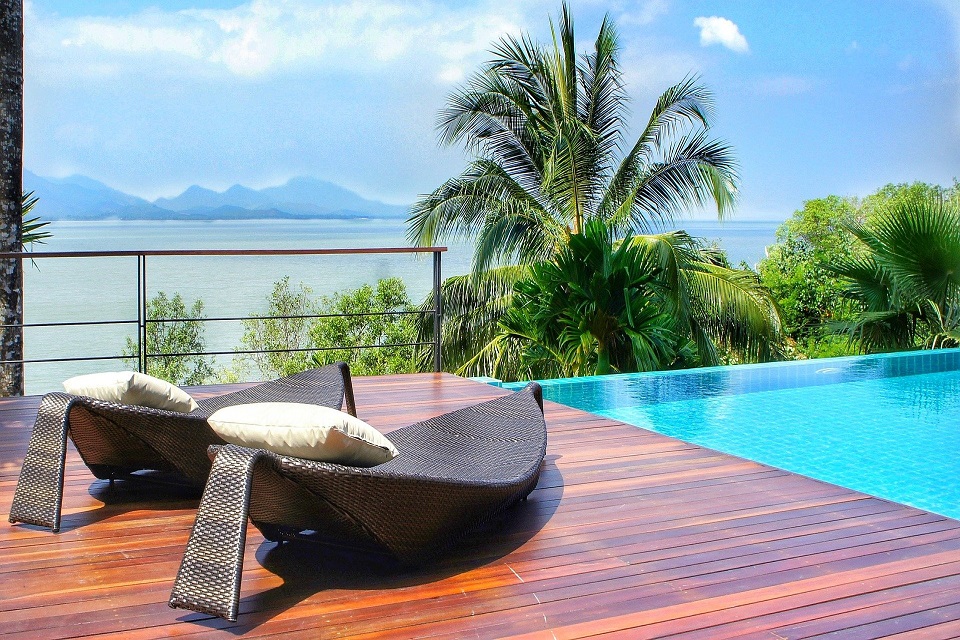
Besides ensuring that it’s always ready for use, maintenance also reduces the life cycle costs of your swimming pool. Swimmers are also at a lower risk of contracting diseases caused by swimming in dirty water.
If you intend to spend lots of time in your backyard oasis this summer, here are tips on how to maintain your swimming pool for summer.
Remove the Debris
Whether you own an above-ground pool or an in-ground pool, start by removing the debris. Using a skimmer, get rid of leaves on the surface of the water. This is a simple task that usually takes a few minutes. After skimming, dispose of the dirt in a place far away from it such that the wind can’t blow it back to the water.
Suppose your pool’s surrounding has trees and other vegetation that make the water dirty; consider pruning them. You can also replace them with less messy species or invest in a pool cover.
Scrub Regularly
After skimming, the next step involves scrubbing. This prevents the growth of algae and bacteria.
When scrubbing, focus on any growths and brush them until the walls are sparkling. If you encounter stubborn spots, fill an old sock with chlorine and place it above the spot for a few hours. The chlorine will soften the growth and make it easier to scrub off using your brush.
Vacuum the Pool
Vacuuming your pool at least once weekly is vital since it allows you to reach the debris inside the water. It also reduces the number of pool chemicals you need to add.
Ensure that you cover all spots when vacuuming your swimming pool. After every cycle, empty the vacuum filter to maintain the equipment’s efficiency.
After vacuuming, brush off any algae and other growths from the walls using a nylon brush. If your pool has a concrete floor, use a stainless steel brush.
Clean the Filter
The three most popular swimming pool filters are cartridge, diatomaceous earth (DE), and sand filters. Notably, sand filters are rarely used in modern construction projects.
The first step to cleaning a filter is backwashing, which means redirecting the flow of water. To do this, you must open the filter’s valve.
In a DE filter, the remains of marine organisms filter the water and discharge the dirt into a filter bag, which must be emptied at least once weekly and be replaced yearly.
For cartridge filters, remove and clean them under a hosepipe before reinserting them.
If you have a sand filter, consider replacing it with either of the two mentioned above. They’re more effective and also help with environmental conservation.
Clean the Pump
Since it’s the equipment that directs water into your pool, your pump must always be clean. Otherwise, your swimming pool water might appear murky and discoloured.
Start by shutting the system down and closing the skimmer valve. This holds the water in place and allows you to clean effectively. Then, remove dirt from the pump’s hair catcher. Unscrew the cover and empty the basket inside. Finish by running water through the pump before returning it to its place.
Check Chemical Levels
Another vital aspect of pool maintenance is maintaining the correct chemical levels. When improperly balanced, your pool water can irritate your skin and eyes. Some chemicals also provide favourable conditions for bacteria to thrive. The recommended interval for testing your pool water is once weekly and more often if it’s raining.
The following are some of the chemicals you need to check out.
- pH level – the ideal pH range is between 7.5 and 7.8. Anything lower can corrode your pool’s surface and irritate your skin.
- Calcium hardness – this is useful in preventing plaster damage. The recommended range is 220 to 350 units.
- Chlorine – this keeps your pool water free of germs and bacteria.
- Cyanuric acid – this protects the chlorine from sunlight.
Check Water Levels
Water levels are as crucial as chemical levels. When it rains heavily, your pool will likely have excess water. Likewise, water levels will go below the recommended level if you hold a pool party or the sun shines too much.
Ideally, the water in your pool should be halfway up the opening of your skimmer. When it’s higher, use a submersible pump to remove the extra water. Check the pump’s weight if you have a fibreglass or vinyl finish in your pool, as these tend to be fragile. If the water level is low, use a hosepipe to increase it.
After restoring your water levels, don’t forget to check the chemical composition. This is because adding water dilutes the chemicals while draining your pool increases their concentration.
Identify and Repair Leaks
During routine maintenance checks, look for any dents that can cause leaks. The best way to do this is by using a bucket.
Add water until the container is ¾ full, then mark where the water reaches. Once you submerge the bucket, mark its exterior surface and leave it afloat for three days. If the water level is lower than the outer mark, your pool leaks. This means that you need to call a professional for repairs.
Use Tennis Balls to Absorb Oils
When you swim, the oil produced by your body and the sunscreen on your skin contaminates your pool water. Luckily, you can remove these oils using an old tennis ball. All you have to do is throw the ball in the water, and its fibres will do the rest.
Final Words
Most of the pool maintenance tasks are straightforward, meaning that you can do it yourself. However, you might need professional assistance in some areas, such as repairing leaks and servicing equipment such as pumps and filters. For this reason, it is wise to call in a technician at least once yearly.







